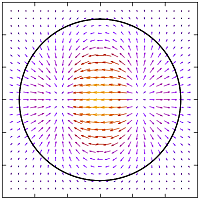 |
 |
 |
 |
 |
 |
 |
|
ResearchThe field of research of our division is ultrafast laser spectroscopy. Experimental facilities of the division consists of four laser labs. The aim of the ultrafast laser spectroscopy experiments is to obtain knowledge about the dynamic behavior of elementary excitations in semiconductors and their nanostructures. The focus of research is motivated by both basic physics and potential applications, including photonics, optoelectronics and spintronics. The current focus of scientific research is: | |
 |
SpintronicsSpintronics is a new dynamic branch of electronics that uses magnetic moment – spin – of charge carriers for data storage and processing. Spintronic concepts have been studied extensively since early eighties and the first components already found their place in commercial applications (read heads of hard disk drives and magnetic random access memories). Recently, utilization of light in spintronics has established its new “optospintronic” branch. Using the interaction of light with spin polarization provides a direct non-invasive method that can be used to modify and to study magnetic order in materials on ultrashort time scales (down to femtoseconds), that is by several orders of magnitude faster than other existing experimental techniques. Our research in the Laboratory of OptoSpintronic
(LOS) is focused on the investigation of mechanisms that can be used for a re-orientation of magnetic moments in ferromagnetic and antiferromagnetic materials on ultra-short time scales using laser pulses. |
 |
Ultrafast processes in semiconductor and nanostructuresThe research and development of new semiconductor materials and their nanostructures is not currently possible without the detailed knowledge of the processes that take place on picosecond and femtosecond time scales. These include, for example, excitation of charge carriers, relaxation and recombination processes. Such rapid processes can only be investigated using special methods based on ultra-short laser pulses. Our division disposes of four laser labs with femtosecond laser systems. We are currently researching ultra-fast processes in semiconductors (e.g. diamond) and in semiconductor nanostructures (silicon nanocrystals, nanodiamond, II-VI and III-V quantum dots). We investigate them by methods of time-resolved spectroscopy (time-reolved photoluminescence, time-resolved transmission and reflection, induced grating, etc.). [Fig. Nature Materials 1, 10–12] |
 |
Terahertz radiationThere is a clear distinction between the electronics and the optics although they are both disciplines which describe behavior of electromagentic fields. The radio waves behave mostly classically with a well defined and controllable phase and amplitude. Optical waves, on the other hand, require advanced methods of phase control, based on quantum phenomena. In between the radio frequencies (up to 100 GHz) and optical frequencies (100 THz), there is a gap which was experimentally inaccessible till lately. The research of this THz gap notably develops now, combining the knowledge and apporaches known from both the electronics and the optics. We develop theoretical methods for description of the interaction of the terahertz radiation with nanomaterials. |
